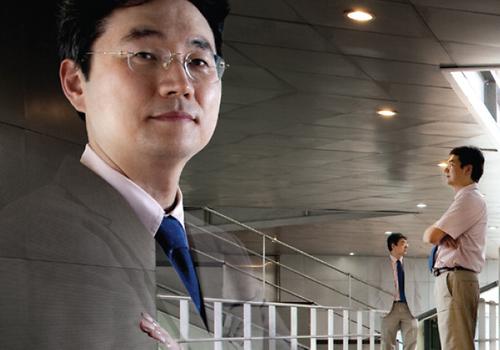- Title
- Yonsei Develops World’s First Smart Invisibility Cloak
- Date
- 2021.06.11
- Writer
- 기계공학부
- 게시글 내용
-

The Optical Metamaterial Laboratory, led by Prof. Kim Kyoung-sik (Mechanical Engineering), is the world’s first to theoretically propose smart metamaterials and experimentally succeed with a smart invisibility cloak. Due to its use of material with heterogeneous structures in fixed condition, the existing invisibility cloak has shown a number of drawbacks, including losing its features, as with compression or tensile deformation, and taking long hard hours to make an invisibility cloak in a smaller size.
The Laboratory’s recent study designed and produced a smart elastic photonic crystal structure that fulfills the unified changes of solid materials’ elastic deformation and optical metamaterials’optical deformation. This structure enables the production of an invisible cloak, maintaining the properties of the cloak regardless of its change in shape, as shown in science fiction films. The study also succeeded in creating the world’s first invisibility cloak made with a homogeneous photonic crystal structure. This has brought us a step closer to mass production of such a flexible largearea invisibility cloak. Their study, entitled “Broadband electromagnetic cloaking with smart metamaterials” (corresponding author: Prof. Kim Kyoung-sik; first author: Shin Dong-heok), was published on November 20, 2012 in the online edition of Nature Communications, a sister publication of the world’s leading scientific journal Nature.
One of the co-authors of the study was Prof. David Smith (Duke University), the first to develop an invisibility cloak and refractive index metamaterials and who has been named in the media as a potential candidate for the Nobel Prize in Physics. Also, corresponding author Prof. Kim Kyoung-sik published a joint research article in Physical Review Letters in 2007 with that year’s Nobel Prize winner in Physics, Prof. David Wineland (United States National Institute of Standards and Technology, NIST). Prof. Kim Kyoung-sik said, “As a master’s and doctoral student, I majored in Particle Physics Theory and Optics. I got to apply elastic solid mechanics to optics as I began to work in Mechanical Engineering. I am very pleased to get such positive results.” He added, “Metamaterial technology can be variably applied to a wide range of such functional devices as optical lithography, stealth technology, optical material, thermal material, and high-efficiency energy material.

